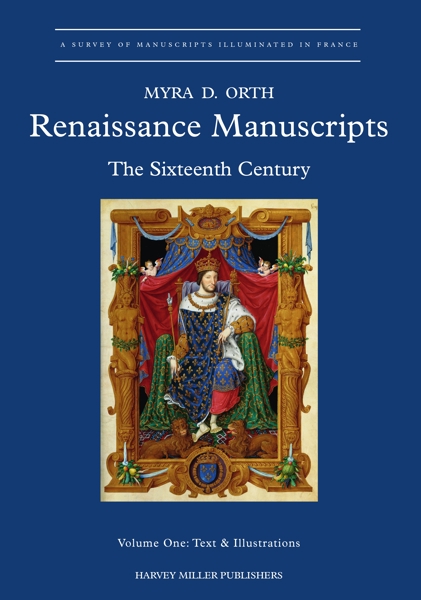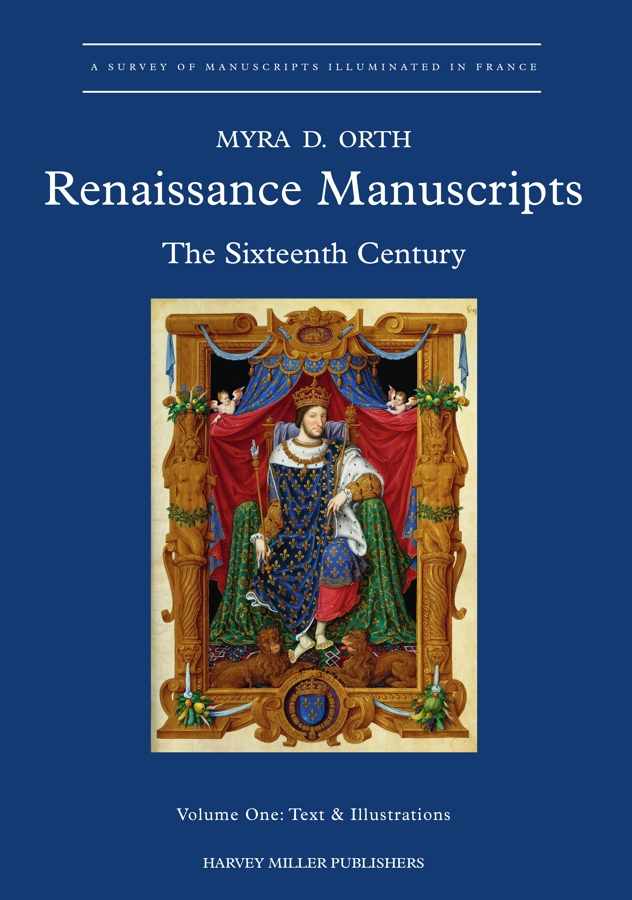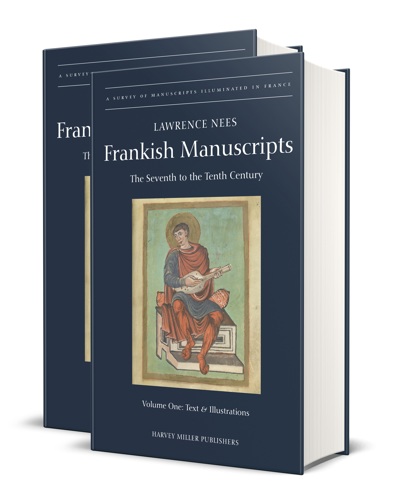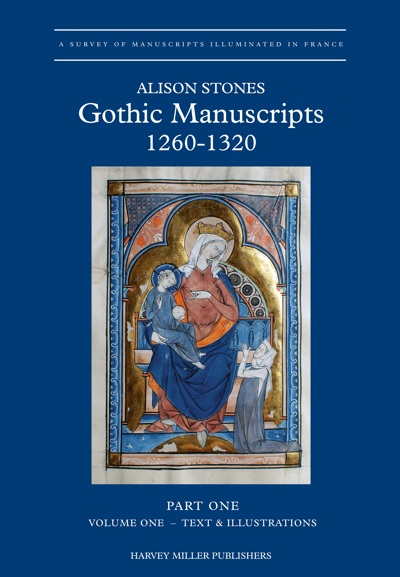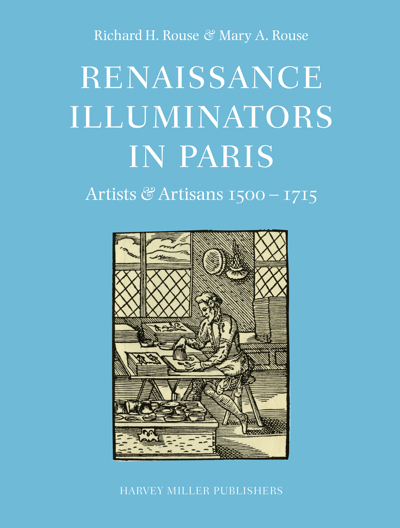
Renaissance Manuscripts: The Sixteenth Century
Myra Orth
- Pages:2 vols, 721 p.
- Size:230 x 330 mm
- Illustrations:321 b/w, 55 col.
- Language(s):English
- Publication Year:2016
- € 250,00 EXCL. VAT RETAIL PRICE
- ISBN: 978-1-872501-30-7
- Hardback
- Available
This publication was included in the "CHOICE 2016 Outstanding Academic Title List".
“Any scholar of French visual culture in the sixteenth century will reference this study with great frequency. These volumes address an extremely understudied topic, and will promote a wide variety of new explorations, particularly including artistic milieux outside the royal circle and Paris. As the culmination of Myra Orth’s body of perceptive, incisive, and thorough work on sixteenth-century French manuscript illumination, this study is an invaluable addition to our understanding of the early modern book and its vital cultural context.” (Larissa Grollemond, in Historians of Netherlandish Art, 2016.09)
“Focused on the period 1515–70, this beautiful two-volume set is the latest installment in a distinguished series, "Survey of Manuscripts Illuminated in France (…) This is a required resource for anyone studying or interested in French Renaissance art." (L. Nees, in Choice, October 2016)
"Thanks to the research of Myra Orth, these ravishing Renaissance treasures are now accessible to a new generation of connoisseurs." (Mark Evans, in: The Art Newspaper, Number 294, October 2017, p. 23)
“Orth’s work will be a vital resource not only for manuscript and book history studies, but also to literary, artistic, and historical scholars of the sixteenth century.” (Susan Broomhall, in Parergon, 35/2, 2018, p. 233)
This publication is the first comprehensive survey to establish the importance of Renaissance manuscript illumination in the history of sixteenth-century French art. Although illustrated printed books were circulating freely by the beginning of the sixteenth century, patronage of manuscripts became all the more special to the ruling elite, and commissions from the court, aristocratic circles and the higher clergy resulted in a surge of artistic creativity that produced a wide range of outstanding illustrated works from devotional books to translations of classical and humanistic texts. While continuing the tradition of French figurative art, ornamentation became a major element in the style of the period, with frames and borders becoming a significant feature of the aesthetic impact of the illuminated page.
One hundred manuscripts have been chosen for this survey to represent the artistic excellence of French book production of the period, as well as to demonstrate the stylistic relationships between artists and between books that may be seen to form distinct groups. Many years of research enabled the author to identify the hands of individual illuminators, both named and anonymous, and to connect these to a particular artistic milieu or regional group. Moreover, not only are the stylistic aspects of the manuscripts analysed, but entirely new information regarding authorship, patronage and historical context are revealed here of hitherto unstudied material.
The author, Myra Orth, completed her catalogue and introductory texts shortly before her sad death some years ago. Since that time, a number of scholars – specialists in French manuscripts studies of the period – have helped to update the literature that has more recently appeared relating to the manuscripts catalogued and to the individual artists and workshops discussed. Present locations of manuscripts that may have changed ownership since Dr Orth’s submission of her work have also been noted.
To accompany the detailed catalogue, the publication includes a corpus of 360 illustrations that offers a significant visual conspectus of manuscript illumination of the period. In addition to the introductory text, the author also provides brief biographies of Artists and Scribes, Authors and Translators, and Patrons and Dedicatees.
